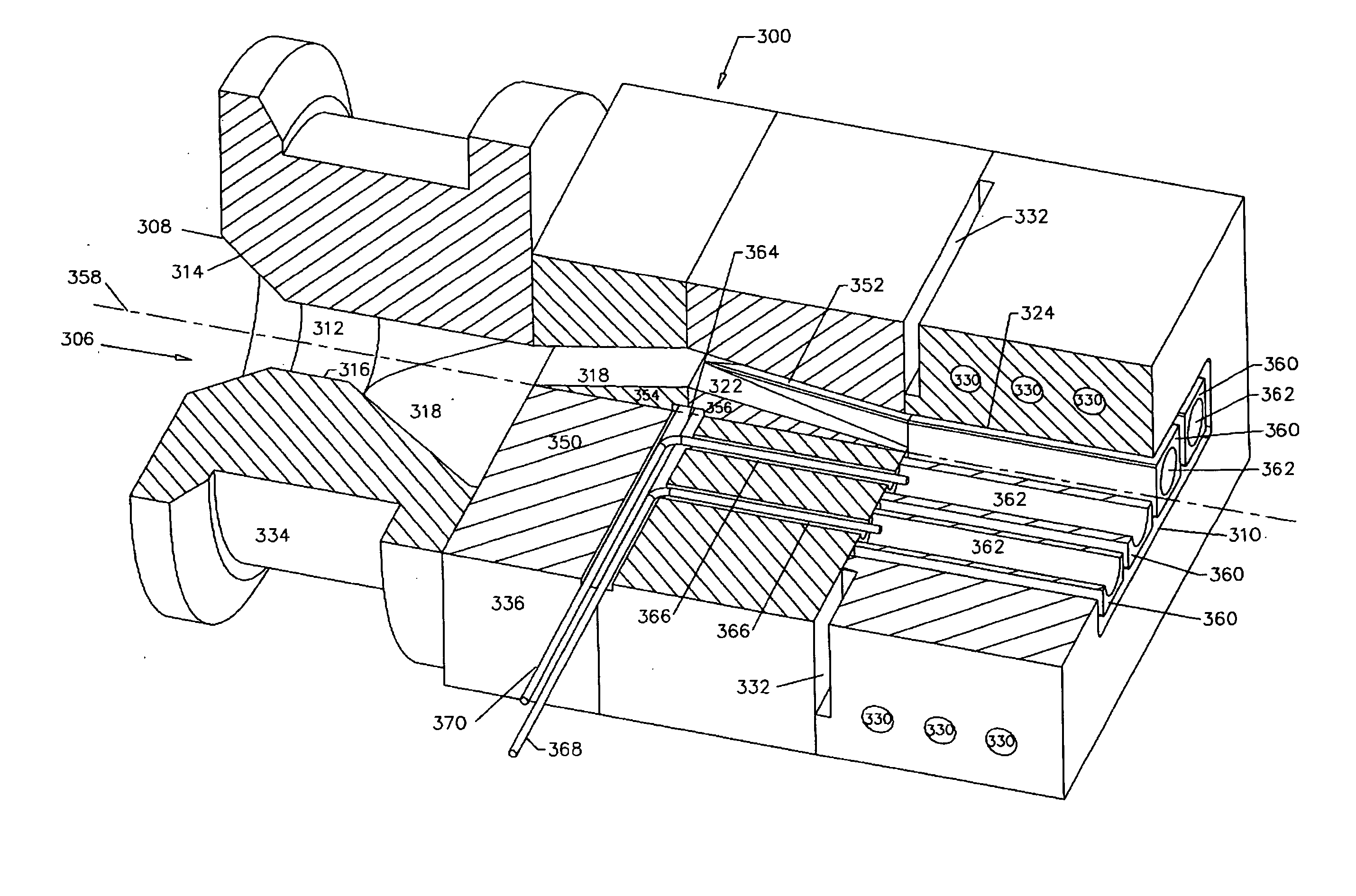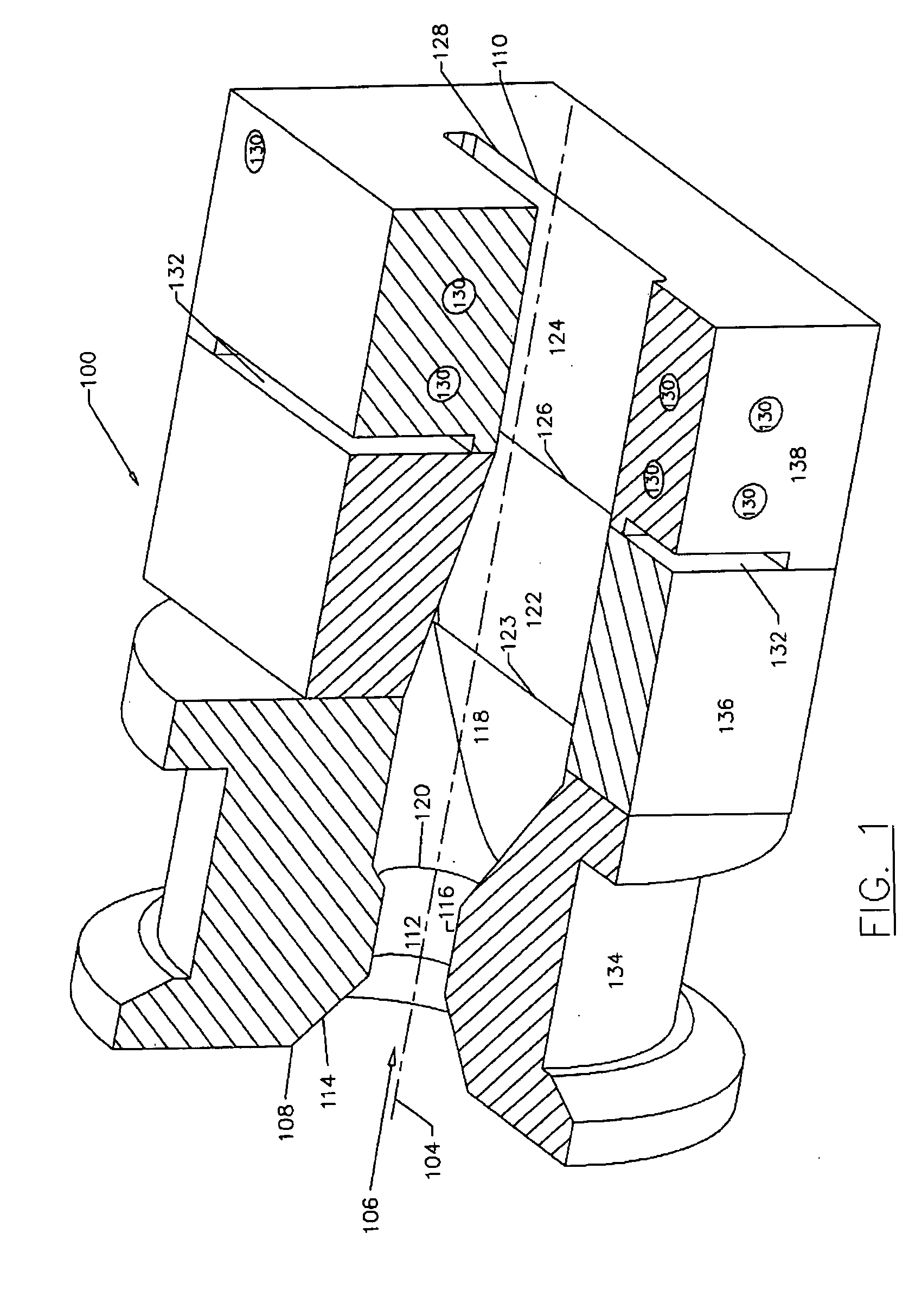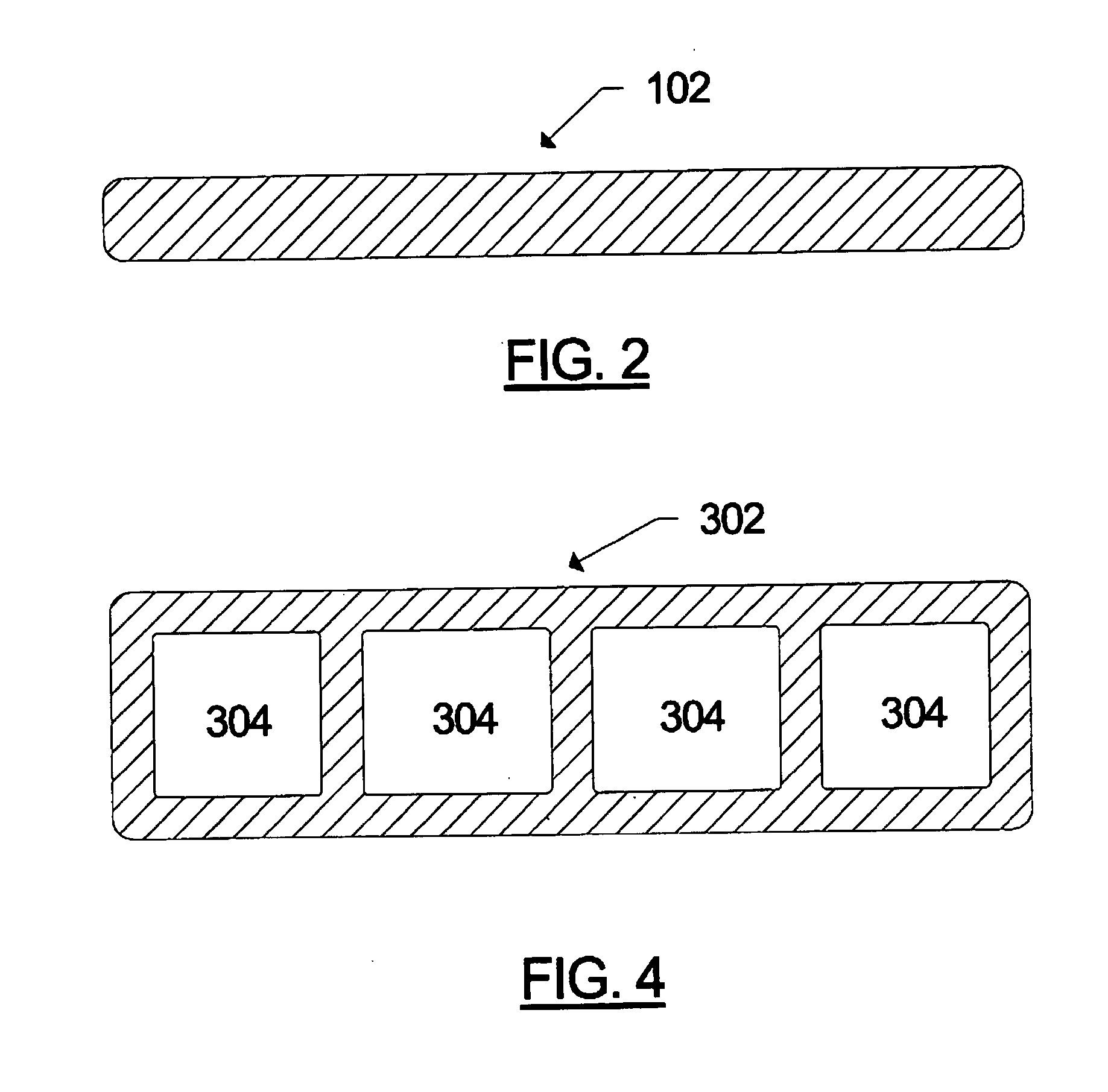Die assembly and production process for profile extrusion
a technology of thermoplastic resin and composite profiles, applied in the direction of dough shaping, manufacturing tools, cellulosic plastic layered products, etc., can solve the problems of profile use, limited outdoor application, and limited use, so as to prevent the occurrence of melt fractures and minimize the effect of us
- Summary
- Abstract
- Description
- Claims
- Application Information
AI Technical Summary
Benefits of technology
Problems solved by technology
Method used
Image
Examples
Embodiment Construction
[0028] Although the invention will be described in terms of specific embodiments, it will be readily apparent to those skilled in the art that various modifications, rearrangements and substitutions can be made without parting from the spirit of this invention.
[0029]FIG. 1 shows a sectional view of one embodiment of a die assembly 100 of the present invention for the continuous production of a solid thermoplastic resin cellulosic fiber composite profile having a rectangular cross-section, while FIG. 2 shows a cross-sectional view of the solid profile 102 produced with the die assembly 100 shown in FIG. 1. The die assembly 100 has an axis 104 oriented from its upstream end to its downstream end. Located within the die assembly 100 is a balanced flow passage 106 through which composite compound is extruded from an upstream inlet 108 to a downstream outlet 110. The inlet 108 and outlet 110 are located in the upstream and downstream ends of the die assembly, respectively. The first par...
PUM
| Property | Measurement | Unit |
|---|---|---|
| Fraction | aaaaa | aaaaa |
| Fraction | aaaaa | aaaaa |
| Percent by mass | aaaaa | aaaaa |
Abstract
Description
Claims
Application Information
 Login to View More
Login to View More - R&D
- Intellectual Property
- Life Sciences
- Materials
- Tech Scout
- Unparalleled Data Quality
- Higher Quality Content
- 60% Fewer Hallucinations
Browse by: Latest US Patents, China's latest patents, Technical Efficacy Thesaurus, Application Domain, Technology Topic, Popular Technical Reports.
© 2025 PatSnap. All rights reserved.Legal|Privacy policy|Modern Slavery Act Transparency Statement|Sitemap|About US| Contact US: help@patsnap.com



